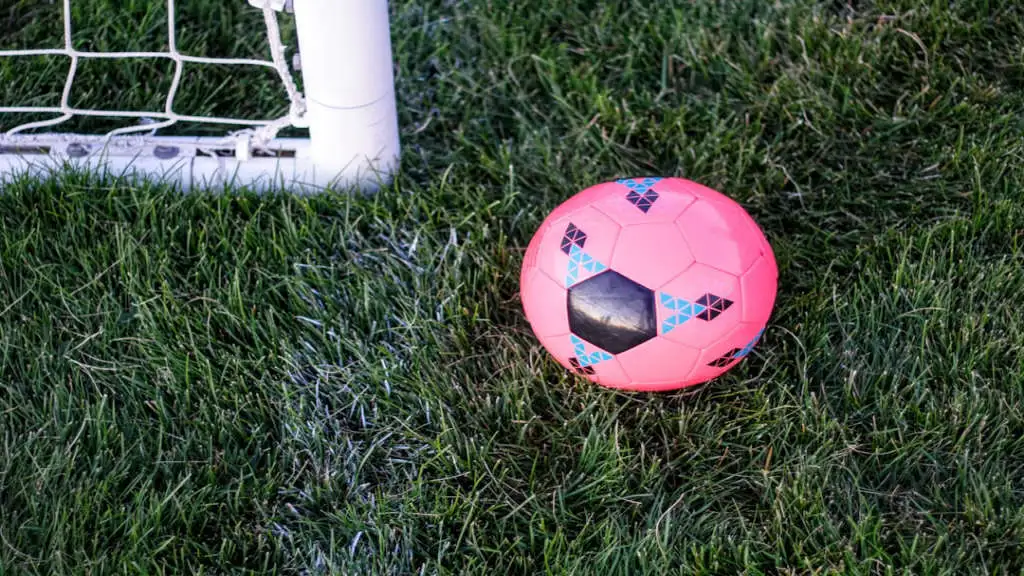
As we lace up our cleats and step onto the pitch, few elements are as iconic to the game of soccer as the humble soccer ball. From its early beginnings of stuffed leather to the high-tech designs of today, the evolution of the soccer ball reflects not just advancements in technology, but also the changing dynamics of the sport itself. Over the years, players and fans alike have witnessed how these spherical companions have transformed both the aesthetics and performance of the game. This journey through time reveals the profound impact a simple ball can have on the beloved sport and its athletes.
Main Points
- Exploration of the historical origins of the soccer ball.
- Technological advancements influencing modern soccer ball designs.
- The impact of different materials on performance and durability.
- How design and branding have shaped the perception of the soccer ball.
- Emphasis on the future of the soccer ball and the sport as a whole.
Related content:
How to kick a soccer ball
How to draw a soccer ball
How to Draw a Soccer Ball: Step-by-Step Guide for Beginners
Unraveling the Secrets: How Soccer Ball Design Influences Game Play

1. The Birth of the Soccer Ball: A Historical Overview
The evolution of the soccer ball is both intriguing and complex. Originating from various materials and designs, the early soccer balls were often stitched together using animal bladders, which certainly present an odd contrast to today’s highly engineered products. The game’s growth inspired innovations, leading to standardized sizes and shapes. Notably, the advent of synthetic materials improved durability and performance. Here’s a brief look at key milestones:
- Ancient Beginnings: Early forms of soccer-like games featured handcrafted balls made of leather and natural bladders.
- Industrial Revolution: This period introduced mass production techniques, allowing balls to become widely available.
- FIFA Standards: The establishment of global guidelines for ball sizes and materials transformed the soccer landscape.
For those seeking the best soccer ball, it’s essential to explore the detailed soccer ball size guide and read through various soccer ball reviews. As you delve into the rich history, remember that each ball, no matter how modern, carries the legacy of the past in every kick.

2. Materials and Design: How Innovation Shaped Soccer Balls
The evolution of soccer balls is fascinating, reflecting both technological and aesthetic advancements. Initially crafted from leather, modern balls now utilize synthetic materials, enhancing durability and performance. Innovations like thermal bonding replaced traditional stitching, resulting in seamless surfaces that improve aerodynamics. This transformation not only benefits professional players but also influences youth sports, making soccer ball for kids more accessible and reliable. In addition, players can easily find soccer ball training equipment online to enhance their skills.
| Material | Benefits |
|---|---|
| Leather | Classic feel, but less durable. |
| Synthetic | Durable, weather-resistant, and offers better control. |
Clearly, the interplay of materials and design has not only refined the sport but also shaped public perception. Choosing the right soccer ball can elevate a player’s game significantly, blurring lines between amateur and professional status. Engaging with these developments encourages enthusiasm in players, igniting passion for the beautiful game.
3. The Influence of Technology on Soccer Ball Performance
Soccer balls have evolved dramatically due to technological advancements. This innovation enhances their aerodynamics, ensuring that players achieve greater control and precision. Interestingly, different soccer ball brands utilize unique materials, which can affect performance in diverse weather conditions. For instance, while one brand may excel in grip, another emphasizes durability. This complexity often leads players to question which ball is truly superior. Ultimately, it’s essential for athletes to understand these nuances to improve their game.
4. Iconic Soccer Balls: A Look at Legendary Designs
Throughout soccer history, certain soccer balls have become emblematic of the sport itself. These legendary designs often evoke nostalgia and passion in fans. For instance, the classic Adidas Tango, used in the 1982 World Cup, represents a pivotal moment in soccer evolution. Its innovative panel design changed the way balls were crafted. Similarly, the Brazuca—famous for its distinctive look and performance during the 2014 World Cup—set new standards for modern balls. It’s fascinating how these objects carry stories, embody cultures, and inspire generations.
Notable Iconic Soccer Balls
- Adidas Brazuca: The official ball of the 2014 World Cup, known for its vibrant colors and unique construction that aided ball control.
- Telstar 18: Released for the 2018 World Cup, this ball combines vintage aesthetics with the latest technology for optimal performance.
- Mitre Delta: A favourite in English football, it stands out for its durability and precision, often used in various leagues.
| Ball Model | Year | Features |
|---|---|---|
| Adidas Tango | 1982 | Classic design, stitched panels. |
| Adidas Brazuca | 2014 | Unique panel shape, enhanced flight stability. |
| Telstar 18 | 2018 | Retro look, latest tech in ball design. |
5. The Role of FIFA Regulations in Soccer Ball Evolution
FIFA regulations play a pivotal role in shaping the evolution of soccer balls. These guidelines not only ensure quality and safety but also influence the materials and designs employed by manufacturers. Consequently, innovations in technology emerge, pushing boundaries and enhancing performance on the field. However, some enthusiasts may feel nostalgic for classic designs. The challenge lies in balancing tradition with progress, as newer models often garner debate among players and fans alike. This dynamic interplay fuels ongoing conversations about the essence of the game.
6. The Cultural Impact of Soccer Balls Around the World
Soccer balls, iconic symbols of the sport, hold a profound cultural significance across the globe. They connect communities, evoke emotions, and inspire dreams. From the dusty streets of Brazil to the manicured pitches of Europe, the sight of a soccer ball brings people together, transcending language and geography. It’s fascinating to see how a simple sphere can foster unity while also sparking rivalry. Indeed, players and fans alike dance to the rhythm of the game, each with their own traditions and stories.
“The beauty of soccer lies not only in its play but in its ability to unite diverse cultures.” – Unknown
Moreover, the evolution of design and materials used in soccer balls reflects technological advancements and cultural shifts. Traditional leather balls have given way to vibrant, synthetic varieties which also carry regional motifs. This makes each kick a blend of heritage and innovation, a poetic intersection where art meets sport.
| Region | Cultural Significance |
|---|---|
| South America | Passion for the game; community bonding |
| Europe | Rivalries; national pride |
In conclusion, while the soccer ball may seem merely an object, it serves as a canvas for cultural expression, reflecting the diverse tapestries of human experience. Each game played expands its story, weaving together joy, competition, and unity.
7. Future Trends: Where is the Soccer Ball Headed Next?
As we gaze into the horizon of the beautiful game, several trends are poised to redefine soccer’s landscape. The emergence of technology and data analytics is reshaping strategies on and off the pitch. Additionally, player welfare continues to take precedence, ensuring athletes can perform at their peak without sacrificing their health. Furthermore, the growing emphasis on sustainability raises questions about the environmental impact of the sport. How will clubs adapt? What technologies will dominate the field? Here are key trends to watch:
- Smart Wearables: These devices offer *real-time data* about a player’s physical condition, aiding in injury prevention.
- Artificial Intelligence: AI-driven analytics can predict player performance and optimize training regimens.
- Green Initiatives: Clubs are increasingly focusing on eco-friendly practices, from stadium designs to travel plans.
In a rapidly evolving landscape, embracing innovation seems essential. Yet, with every shift, the core passion for the game remains at the forefront. The future of soccer promises to be fascinating, unpredictable, and ultimately transformative.
You Can Also Review These:
Kicking It Old School: The Classic Origins of Footballs – YouTube
The History And Evolution Of The Soccer Ball – YouTube
Conclusion
The soccer ball has undergone a remarkable transformation over centuries, reflecting changes in both technology and culture. From the rudimentary designs of ancient times to the modern, aerodynamically engineered spheres we see today, each evolution tells a story of innovation and passion. These changes not only enhance the game but also connect players and fans across generations. People cherish the soccer ball not just as a piece of equipment, but as a symbol of community and shared joy. As we kick it around on fields and streets, we carry forward a legacy that has united fans worldwide. Setting our sights on the future, let’s celebrate the journey of the soccer ball and the game it continues to define.
Frequently Asked Questions
What is the standard size of a soccer ball for adults?
The standard size of a soccer ball for adults is Size 5, which has a circumference of 68-70 cm.
How often should I replace my soccer ball?
You should replace your soccer ball every few months or as soon as you notice significant wear or loss of shape, especially if you play frequently.
What materials are soccer balls made from?
Soccer balls are typically made from synthetic leather, rubber, and sometimes a foam layer for cushioning.
How do I properly inflate a soccer ball?
To properly inflate a soccer ball, use a pump with a pressure gauge and inflate to the recommended pressure found on the ball, usually between 8.5 and 15.5 psi.
Can I use a soccer ball on different surfaces?
Yes, but it’s best to use a ball designed for the specific surface; for example, there are balls for grass, turf, and indoor play.





